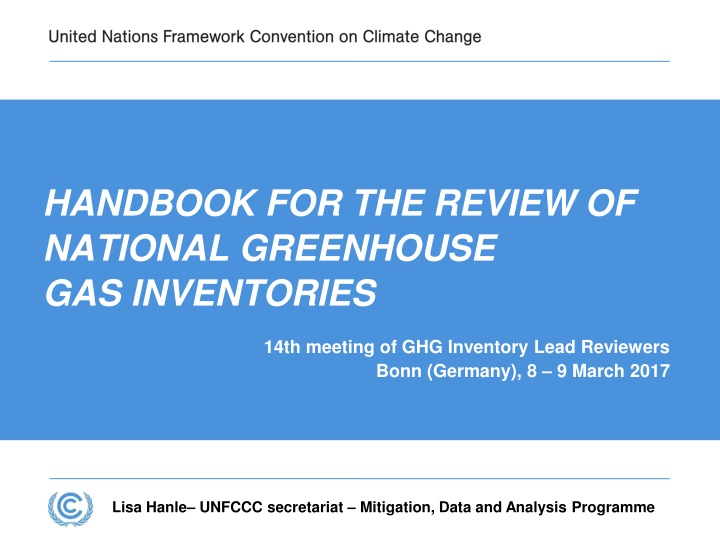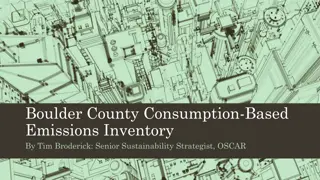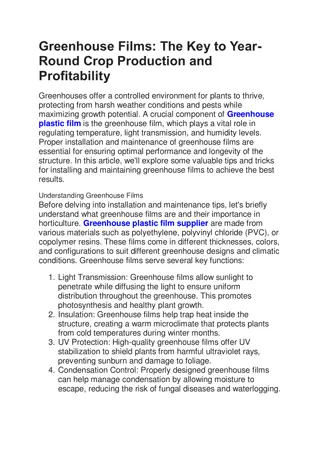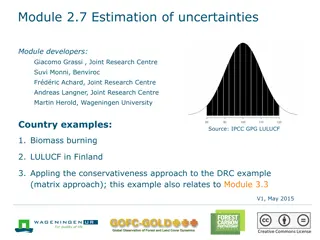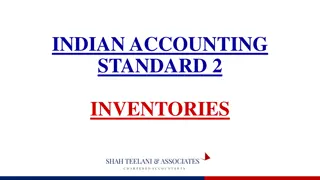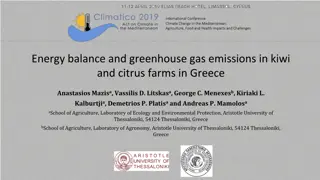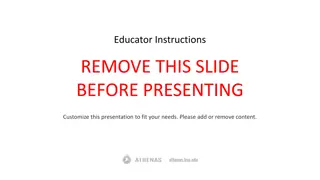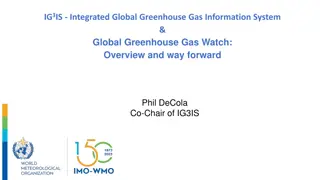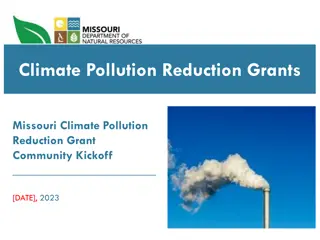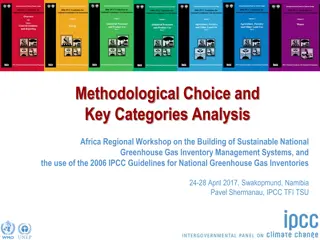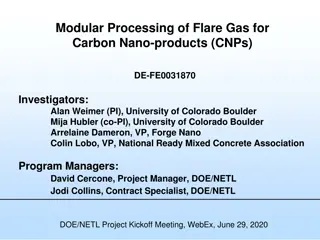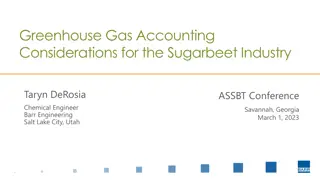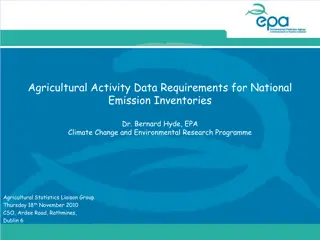Handbook for the Review of National Greenhouse Gas Inventories - Overview and Implementation Guide
This document provides a comprehensive guide for the review of national greenhouse gas inventories, detailing the history, development, and key components of the handbook. It covers reporting requirements, review processes, sector-specific guidance, and incorporation into your work as a Lead Reviewer. The handbook aims to ensure effective and consistent reviews of greenhouse gas inventories for accurate reporting.
Download Presentation

Please find below an Image/Link to download the presentation.
The content on the website is provided AS IS for your information and personal use only. It may not be sold, licensed, or shared on other websites without obtaining consent from the author.If you encounter any issues during the download, it is possible that the publisher has removed the file from their server.
You are allowed to download the files provided on this website for personal or commercial use, subject to the condition that they are used lawfully. All files are the property of their respective owners.
The content on the website is provided AS IS for your information and personal use only. It may not be sold, licensed, or shared on other websites without obtaining consent from the author.
E N D
Presentation Transcript
HANDBOOK FOR THE REVIEW OF NATIONAL GREENHOUSE GAS INVENTORIES 14th meeting of GHG Inventory Lead Reviewers Bonn (Germany), 8 9 March 2017 Lisa Hanle UNFCCC secretariat Mitigation, Data and Analysis Programme
History 2016 Updated for 24/CP.19 and 13/CP.20 2003 1st LR Meeting: LRs suggested the secretariat incorporate recommendations from the LRs, and make the Handbook available for ERTs in 2003 and beyond 2017 Updated to reflect KP decisions 2003-2007 Periodically updated, last major update in 2007 2002: Review Handbook available
Development 2017 Review Handbook Incorporation of 3/CMP.11 and 4/CMP.11 2016 Review Handbook 2007 Review Handbook 24/CP.19 13/CP.20 Stepwise Guide
Outline of Review Handbook New in 2017 Table of Contents 1. Introduction 2. Overview of the review of GHG inventories (reporting requirements) 3. Activities, timing and deliverables during the review process 4. Effective use of the review tools 5. Effective use of templates 6. General approach to review of two primary elements of inventory submission 7. Sector-specific guidance 8. Glossary Major differences between Convention and KP reviews Processes related to Saturday Paper and adjustments Incorporation of the RITS; Saturday Paper Generalist: Review of information reported under Article 7, para. 1, CPR, SEF tables, 3.7 ter, etc. KP LULUCF: Overview of decisions, checks for KP LULUCF tables, FMRL, natural disturbances
Updated Content: General Chapters Approach Discussion and Decision trees or checklists
Incorporating the Review Handbook into your work as LRs Before review week During review week After review week - Refresh your memory - Focus: Sector- specific guidance - Focus: Any chapter, as needed - Introduce the Handbook to your ERT - Assist new reviewers: During 2016 cycle, some experts used the sector tables as checklists to guide in identifying questions - Reminder of deadlines - Answer questions about Saturday Paper - Encourage new reviewers in particular to review - Focus: Any chapter, as needed
Next Steps A complete draft version of the review handbook has been made available (to LRs only) for your consideration a) Vast majority already reviewed in 2016 b) New information in primarily chapters II.C, III.C, III.D, VII.B and VII.H If you have comments on the content of the Review Handbook, please send them to GHGreviews@unfccc.int, by 3 April 2017. Completed Review Handbook will be included in the Review Package uploaded to the GHG VTR for the 2017 review cycle.
Possible elements of LR conclusions Welcome the completion of the Review Handbook for the review of Annex I GHG inventories that incorporates the most recent decisions related to reporting and review under the Convention and the Kyoto Protocol; Encourage the LRs and the secretariat to promote the use the Review Handbook as a tool to guide reviewers, particularly new reviewers during the review week who may need additional guidance and assistance regarding the scope of the review; Invite the secretariat to maintain this as an evergreen document by continuing to review and, as appropriate, update the Review Handbook in future years to ensure that it reflects the latest practices, procedures and tools.
